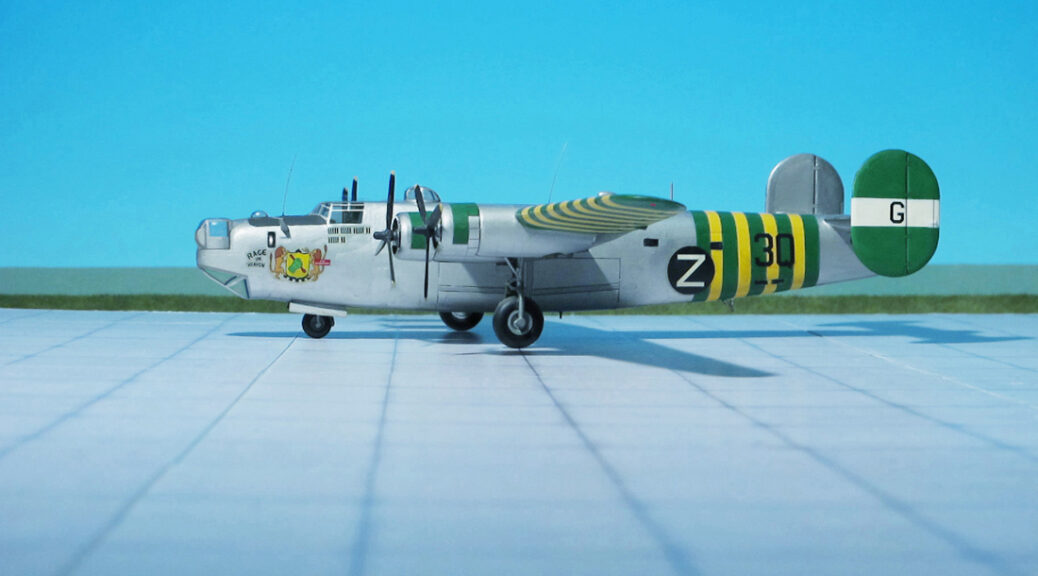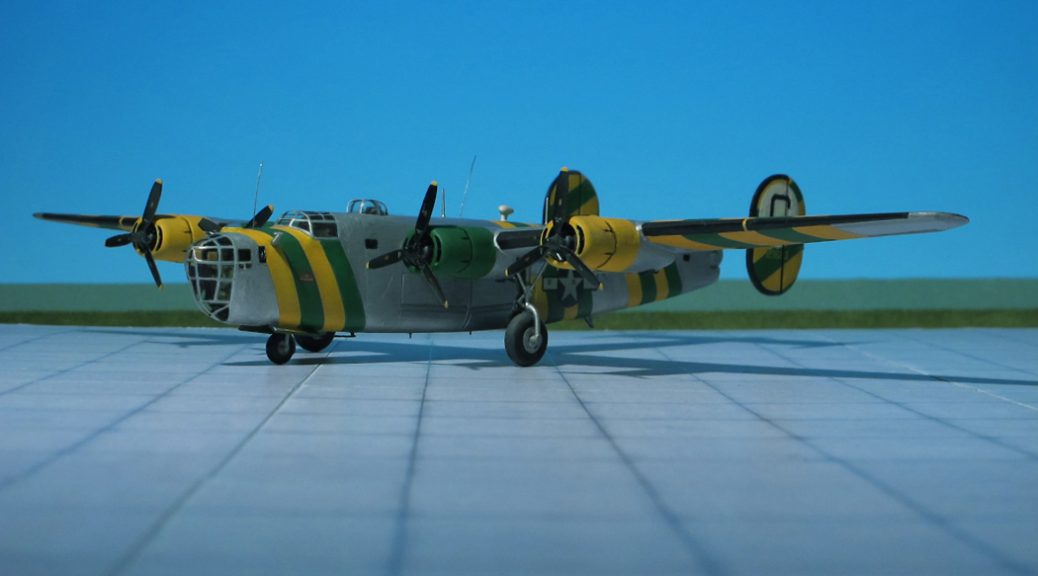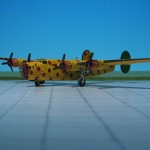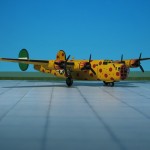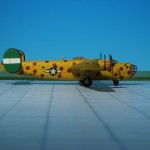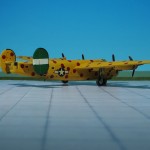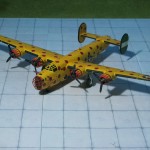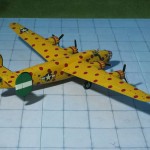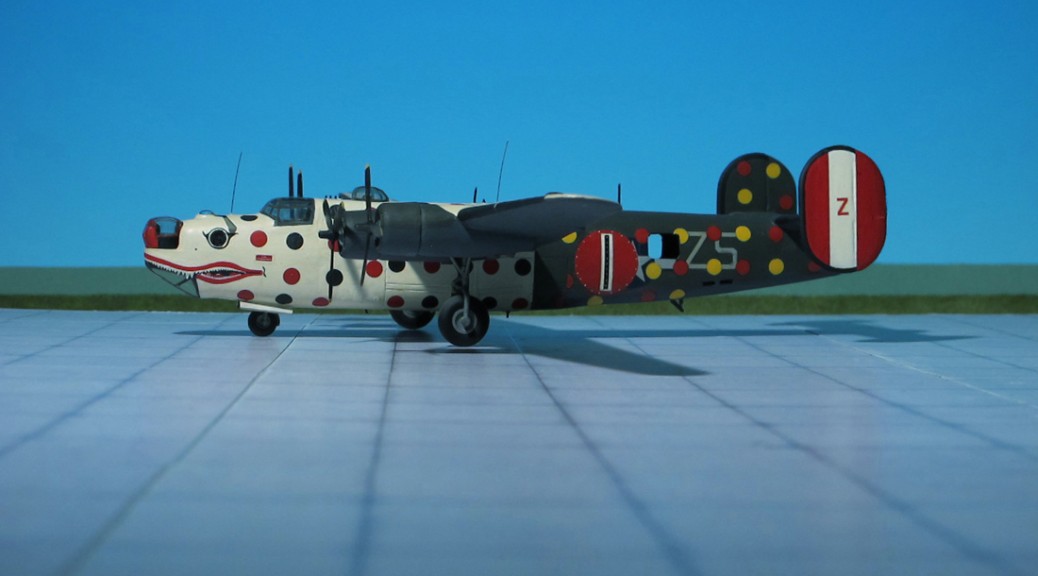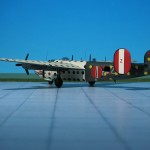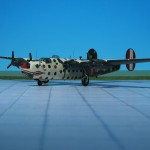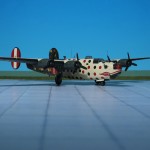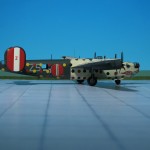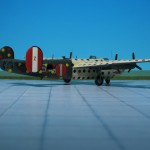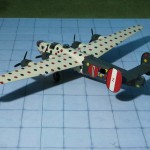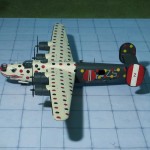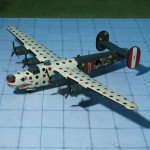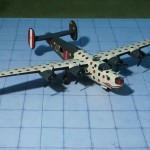TYPE: Heavy bomber, Formation ship
ACCOMMODATION: Crew of five or six
POWER PLANT: Four Pratt & Whitney R-1830-35 Twin Wasp turbo-supercharged radial engines, rated at 1,200 hp each
PERFORMANCE: 297 mph at 25,000 ft
COMMENT: The Consolidated B-24 Liberator was an American heavy bomber, designed by Consolidated Aircraft of San Diego, California. It was known within the company as the Model 32, and some initial production aircraft were laid down as export models designated as various LB-30s, in the Land Bomber design category.
The B-24 was used extensively in World War II where it served in every branch of the American armed forces, as well as several Allied air forces and navies. It saw use in every theater of operations. Along with the Boeing B-17, the B-24 was the mainstay of the US strategic bombing campaign in the Western European theater. Due to its range, it proved useful in bombing operations in the Pacific, including the bombing of Japan.
In February 1944, the 2nd Division authorized the use of “Assembly Ships” (or “Formation Ships”) specially fitted to aid the assembly of individual group formations. They were equipped with signal lighting, provision for quantity discharge of pyrotechnics, and were painted with distinctive group-specific high-contrast patterns of stripes, checkers or polka dots to enable easy recognition by their flock of bombers. The aircraft used in the first allocation were B-24Ds retired by the 44th, 93rd and 389th Groups. Arrangements for signal lighting varied from group to group, but generally consisted of white flashing lamps on both sides of the fuselage arranged to form the identification letter of the group. All armament and armor were removed and in some cases the tail turret. In the B-24Hs used for this purpose, the nose turret was removed and replaced by a “carpetbagger” type nose. Following incidents when flare guns were accidentally discharged inside the rear fuselage, some assembly (formation) ships had pyrotechnic guns fixed through the fuselage sides. As these aircraft normally returned to base once a formation had been established, a skeleton crew of two pilots, navigator, radio operator and one or two flare discharge operators were carried. In some groups an observer officer flew in the tail position to monitor the formation. These aircraft became known as Judas goats.
To help minimise the risk of collisions and help crews get their aircraft into the correct formation, during 1943 each Bomb Group was required to choose one of its older aircraft, normally a Boeing B-17 Flying Fortress or Consilidated B-24 Liberator, to be modified to lead that group’s formation. Once the aircraft had been chosen it would be stripped of its armour and armament, fitted with extra navigations lights and repainted in a distinctive paint scheme tailored for each group. With a basic crew of five or six people, two pilots, navigator, wireless operator and either one or two crew members to discharge flares.
The aircraft would be the first to take-off, maintaining a steady speed and rate of climb they would then fly to the rendezvous point discharging flares and flashing their lights until the aircraft of the group they were leading had successfully formed up. Once this had been done they would then change course for the intended target until they formed up with the other bomber groups on the operation. Then, along with the other assembly ships, turned round and returned to base, while the bombers continued onto their target.
Rage in Heaven (USAAC Serial No. 44-40165), a later model B-24J Liberator, was Lead Assembly Ship for 491st Bombardment Group, operated by the 852nd Bombardment Squadron, and replacing the groups older assemblyship The Little Gramper. This crashed, exploded and burned on 5 January 1945 after taking off in a blinding snowstorm to lead the assembly of the group. A second B-24 crashed minutes later because of the icy conditions and the mission was cancelled. Rage in Heaven was a combat veteran aircraft with the 852nd Bombardment Squadron of the 491st Bombardment Group, but she is best known for her bright green and yellow stripes as an assembly aircraft. In her original scheme, it appears she had dark green stripes over bare metal, but in this later photograph she sports her better known with more yellow and green stripes (Ref.:24).
